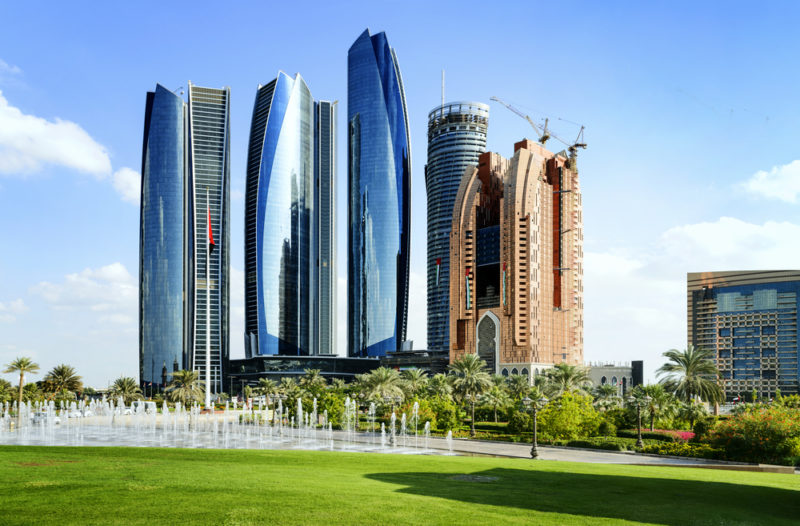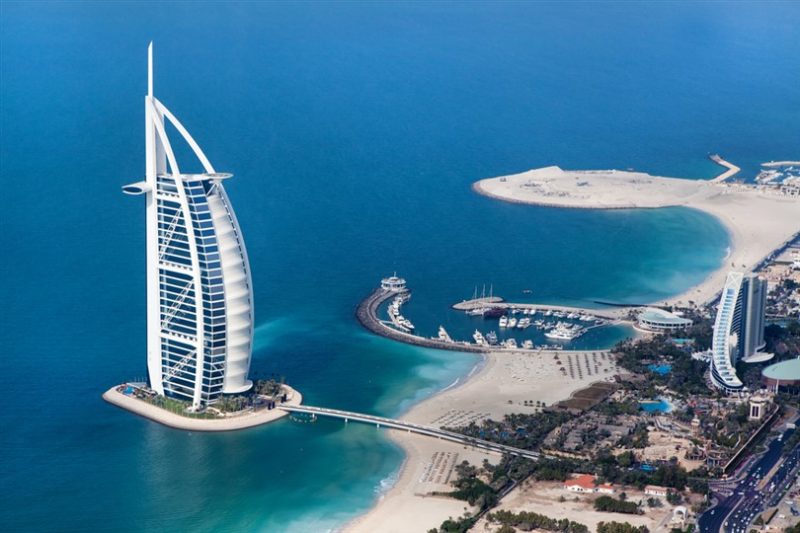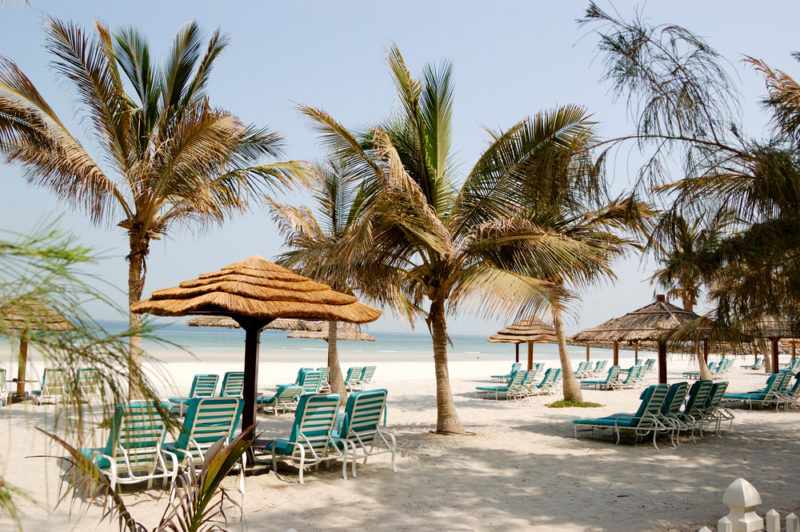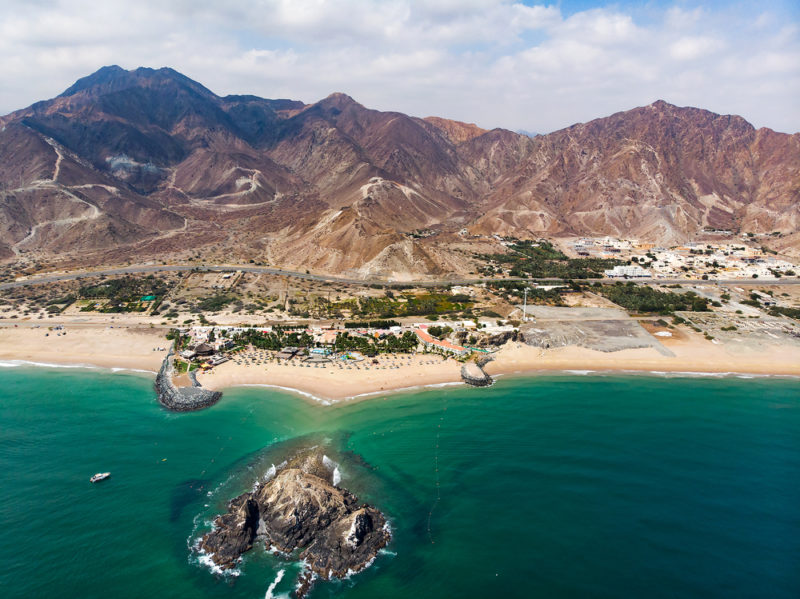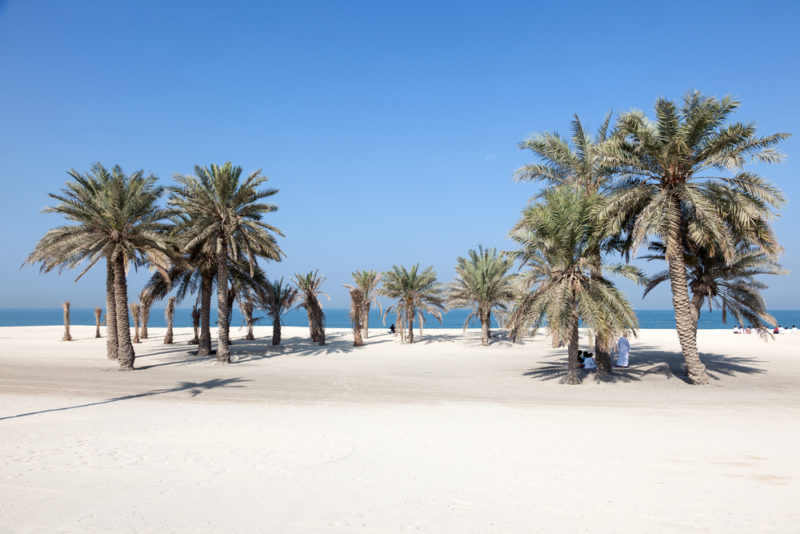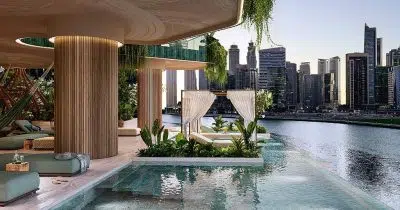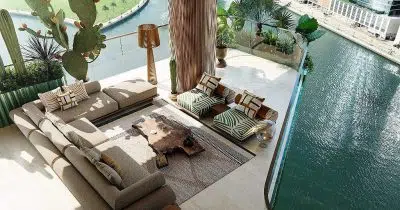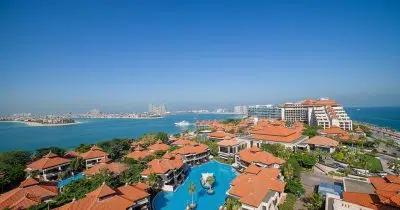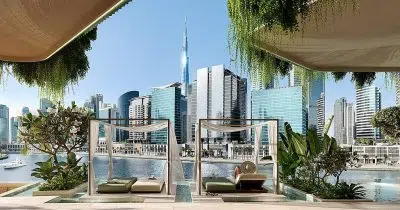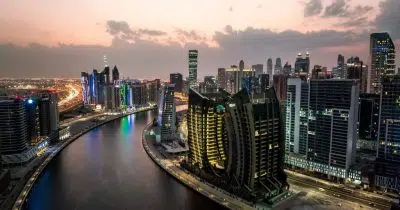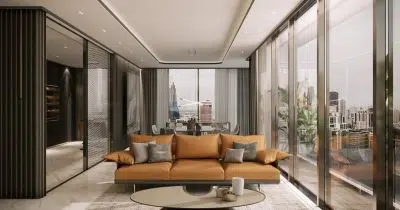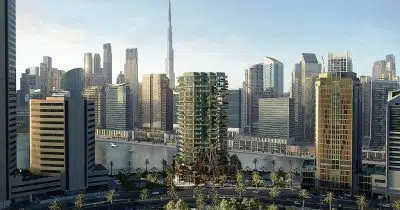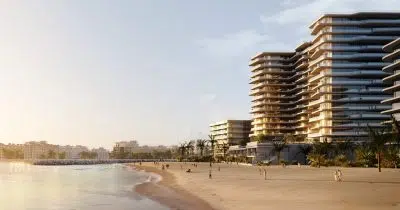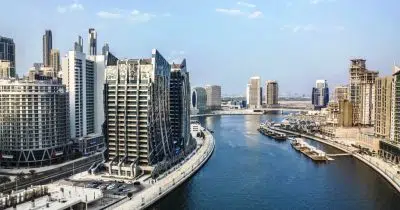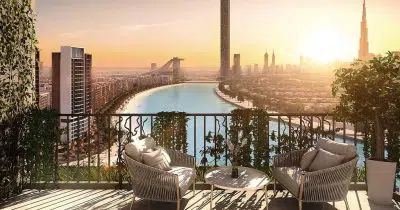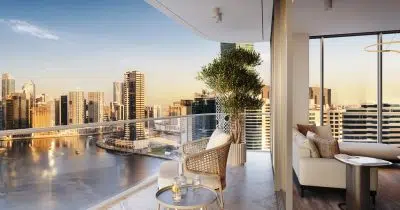Welcome to the ultimate guide to the Seven Emirates of the UAE in the Middle East, where we’ll explore everything to know about this enchanting and diverse country. From Dubai’s bustling streets to Abu Dhabi’s serene deserts, each Middle East emirate offers unique experiences.
In this guide, we will take you on a journey through these seven emirates – Dubai, Abu Dhabi, Sharjah, Ajman, Fujairah, Umm Al Quwain, and Ras Al Khaimah – and unveil the hidden gems, cultural landmarks, and stunning landscapes that make the United Arab Emirates the extraordinary Middle East destination. Whether you are planning a trip to the United Arab Emirates or want to know more about investing and buying property, we have you covered.
About the Seven Emirates of the UAE
Overview of the Seven Emirates
The United Arab Emirates, a Middle East federation in the southeastern Arabian Peninsula consist of seven emirates; Abu Dhabi, Dubai, Sharjah, Ajman, Fujairah, Umm Al Quwain and Ras Al Khaimah. Despite their differences, the 7 emirates share a common history, language, and religion. They are united by progress and development for the Middle East, and earn fame for modern infrastructure, high living standards and thriving economies fuelled by oil and gas exports.
The United Arab Emirates covers approximately 83,600 square kilometres in the Middle East, making it slightly smaller than the USA state of Maine. Characterised by vast deserts, including the Rub’ al Khali (the Empty Quarter), the Persian Gulf climate in the United Arab Emirates is arid, with hot summers and mild winters.
The hottest months reach scorching highs of up to 50°C (122°F), while winter months hover around 20-25°C (68-77°F). Rainfall is minimal, averaging just 100 mm per year. Still, the country has made significant strides in water management and desalination to overcome water scarcity.
History of the Emirates
The Trucial States, also called the Trucial Coast or Trucial Oman, were sheikhdoms on the eastern Arabian Peninsula in what is now the United Arab Emirates. Trucial” derives from the word “truce” and refers to agreements or truces these sheikhdoms entered into with the British government in the 19th century.
These agreements essentially made the Trucial States a British protectorate, which meant while they retained autonomy and local rule, they had close relationships with Britain. They also relied on British support for defence and foreign affairs.
The Trucial States were under British protection until the early 1970s. In 1971, following the expiration of treaty relationships, the six Trucial States united and formed the United Arab Emirates (UAE), which formally came into existence on December 2, 1971. The seventh emirate, Ras Al Khaimah, joined shortly after in 1972. The United Arab Emirates owes the modern development and success to His Highness Sheikh Zayed bin Sultan Al Nahyan, often called Sheikh Zayed. He is revered, and his legacy continues to shape the nation.
Modern Day Emirates
Recognising the finite nature of oil resources, the United Arab Emirates actively diversifies economies. This diversification is driven by the “UAE Vision 2021” and “UAE Vision 2071” initiatives, aiming to make the country less dependent on oil and more focused on sectors like tourism, technology, and finance. Dubai, in particular, emerged as a global business and tourism hub, with the Dubai International Financial Centre (DIFC) and the Dubai Expo 2020 as recent highlights.
The United Arab Emirates invested heavily in infrastructure, creating iconic landmarks. Dubai, in particular, is renowned for ultramodern architecture, featuring the Burj Khalifa, the world’s tallest building, and the Palm Jumeirah, an artificial palm-shaped island. These attractions, luxury resorts, and shopping malls have made Dubai a top tourist destination.
On the other hand, Abu Dhabi Emirate features Yas Island, which hosts Ferrari World, the Yas Marina Circuit, and Yas Waterworld. The cultural heritage also shines at attractions like the Louvre Abu Dhabi and the Qasr Al Watan Presidential Palace. While many residents are expatriates, there is also a significant Emirati population.
Facts and Figures
- Population: Approximately 9.5 million (2022)
- Currency: UAE Dirham (AED)
- Religion: Islam
- Capital: Abu Dhabi
- Official Language: Arabic
- Government: Federal monarchy with seven emirates
- GDP (2021): USD 421.14 billion
- GDP per capita (2021): $44,401 USD
World Rankings
- Ease of Doing Business: 16th
- Human Development Index: 35th
- Global Innovation Index: 34th
- Press Freedom Index: 129th
Geography of the UAE
The UAE’s most significant land border is with Saudi Arabia, to the west and south. This border with Saudi Arabia is relatively long and extends through the desert regions of both countries. The eastern border is shared with Oman. This border runs along the rugged terrain and mountains. However, it does have territorial disputes with Iran over islands.
As part of the Persian Gulf
The Middle Eastern Persian Gulf, also called the Arabian Gulf, is a body of water that plays a central role in the UAE’s geography, history, and economy. The Persian Gulf covers approximately 55,000 square miles (about 143,000 square kilometres). It borders several countries, including Iran to the north, Saudi Arabia to the west, and the UAE to the south and east. The UAE’s coastline extends along the southeastern Persian Gulf, providing extensive access to this body of water.
For the UAE, the Persian Gulf is of paramount economic importance. Coastal cities like Abu Dhabi, Dubai, and Sharjah have grown into thriving financial centres with extensive port facilities. The UAE’s major ports, like Jebel Ali Port in Dubai and Khalifa Port in Abu Dhabi, are strategically along the Gulf and have become major global shipping hubs.
Abu Dhabi: The Capital City
Abu Dhabi, the capital and largest UAE emirate in the eastern Arabian Peninsula, has vast gas and oil reserves. Abu Dhabi is also home to the famous Sheikh Zayed Grand Mosque, and museums include the Abu Dhabi Cultural Foundation, Qasr Al Hosn Fort, and Abu Dhabi Falcon Hospital. The city also boasts world-class shopping malls, like Abu Dhabi Mall and Marina Mall, to indulge in luxury brands and international cuisine.
To experience Abu Dhabi’s beauty, head to the Corniche waterfront promenade stretching miles along the coast. Also, take desert safari tours to explore sand dunes and experience traditional Emirati hospitality. Saadiyat Island, a large, low-lying island just off the coast of Abu Dhabi, is often called the “Island of Happiness” and is a prominent UAE cultural destination.
One famous attraction there, the Louvre Abu Dhabi, opened in 2017 as a UAE and French collaboration house for global art and artefacts. Another major cultural institution under development on Saadiyat Island is the Guggenheim Abu Dhabi. This museum, designed by architect Frank Gehry, will feature an impressive collection of contemporary art when completed.
Named after the founding father, Sheikh Zayed bin Sultan Al Nahyan, Zayed National Museum is another prominent cultural project planned for Saadiyat Island. The island also features several luxury resorts, including St. Regis Saadiyat Island Resort and Park Hyatt Abu Dhabi Hotel and Villas, making the island famous for upscale tourism and relaxation.
Bani Yas Island, the largest natural UAE island, is positioned in the Arabian Gulf, about 170 kilometres (105 miles) southwest of Abu Dhabi. Bani Yas Island was historically inhabited by the Bani Yas tribe, known for their pearl diving and fishing activities. The island was the birthplace of Sheikh Zayed bin Sultan Al Nahyan, the founding father.
Dubai: Luxury and Modern Real Estate
Dubai’s most famous and largest UAE city features modern skyscrapers, luxurious shopping, and vibrant nightlife. The populous city features the iconic Burj Khalifa, the world’s tallest building, and the Dubai Mall, but for adventure, Dubai City offers thrilling activities, such as skydiving, jet skiing, sand dunes, and indoor skiing. Also enjoy hot air balloon rides over the desert or jump onboard dhow cruises along Dubai Creek.
Explore Dubai Museum, housed in a 200-year-old fort, or visit Jumeirah Mosque, open to non-Muslim visitors. To taste traditional Emirati cuisine, head to the Al Fahidi Historical District for local delicacies and shop for souvenirs. The Burj Al Arab hotel and residences became an iconic symbol of Dubai city and a global symbol of luxury and opulence. Construction began in 1994 and was completed in 1999. It stands on an artificial island connected to Dubai’s mainland by a private bridge. The Royal Suite spans two floors, features a private elevator, and has exquisite furnishings and decor.
As the most populous emirate, Downtown Dubai offers cosmopolitan and modern lifestyles for professionals, expatriates, and those who appreciate luxury living with access to world-class amenities like the Dubai Metro. Emaar Square, within Downtown Dubai, houses several significant companies and corporations. Adjacent to Burj Khalifa, Dubai Mall boasts high-end retail outlets, restaurants, entertainment options, and attractions. (See property for sale in Dubai.)
Sharjah Cultural Capital
Seven Emirates of the UAE, a vibrant and culturally rich emirate, sits on the northeastern UAE coast along the Arabian Gulf. Sharjah covers 2,590 square kilometres, with a population of around 1.5 million, and is often called the “Cultural UAE Capital ” due to preserving and promoting Arabic culture and heritage.
Sharjah was designated as the UNESCO World Book Capital in 2019, recognising efforts to promote literacy and reading, and the emirate is home to Sharjah Port, which plays crucial roles in trade and commerce. Sharjah’s several well-established universities make this emirate a significant UAE educational hub. The emirate also houses the Sharjah Arts Museum, Heritage Museum, and Calligraphy Museum.
Sharjah’s multiple economic free zones include the Sharjah Airport International Free Zone (SAIF Zone) and Hamriyah Free Zone Authority (HFZA). While Sharjah’s several natural reserves and protected areas include Wasit Wetland Centre, a sanctuary for migratory birds.
Sharjah hosts several cultural and educational festivals throughout the year, like the Sharjah International Book Fair and Sharjah Light Festival, which illuminate landmarks with stunning light displays. The emirate is served by Sharjah International Airport, which connects it to various international destinations. Sharjah also boasts a well-developed road network and is easily connected to other UAE emirates.
Ajman: The Smallest Emirate with Scenic Beauty
Ajman, on the Arabian Gulf coast, to the north of Sharjah and approximately 10 kilometres (6 miles) from Dubai, covers 260 square kilometres (100 square miles), making it the smallest UAE emirate for land mass. The population of Ajman is around 543,000 people. The Port of Ajman and the Ajman Free Zone are critical economic drivers. Ajman also features Ajman University, which offers various academic programs for international students.
While Ajman does not have a commercial airport, it is close to Sharjah International Airport and Dubai International Airport. Several residential and commercial projects have contributed to modernisation and growth. While Ajman is a smaller UAE emirate, expect culture, economic activities, and developing infrastructures that contribute to diversity and dynamism.
Fujairah: Emirate of Mountains and Beaches
Located on the east UAE coast, along the Gulf of Oman, Fujairah is the only emirate with coastlines along the Arabian Gulf and Gulf of Oman. Fujairah covers 1,165 square kilometres (450 square miles) and houses a population of around 277,000 people.
The emirate established free zones like the Fujairah Free Zone and Fujairah Creative City to attract investors, and for leisure Fujairah features rugged, mountainous terrain, including the Hajar Mountains, which offer picturesque landscapes and opportunities for outdoor activities like hiking. The emirate also boasts beautiful beaches along the Gulf of Oman, attracting residents and tourists.
Fujairah International Airport provides air travel options, and the emirate has significantly invested in infrastructure. Fujairah’s unique geographical features, economic diversification, and cultural heritage make it a distinct and fascinating Emirate.
Ras Al Khaimah: Emirate of Adventure and Nature
Ras Al Khaimah, often abbreviated as RAK, overlooks the Arabian Gulf in the northern UAE, along the eastern Arabian Peninsula. The emirate covers 1,700 square kilometres (656 square miles). The population of Ras Al Khaimah is around 400,000 people.
Ras Al Khaimah’s economy focuses on various sectors, including manufacturing, tourism, agriculture, and fishing. The emirate features several free zones, including RAK Free Trade Zone and RAK Investment Authority, which attract businesses and foreign investment.
The emirate features some of the Hajar Mountains, offering picturesque landscapes and outdoor activities like hiking and mountain biking. Jebel Jais, located in Ras Al Khaimah, is the highest UAE peak with stunning views and attractions, like Jebel Jais Via Ferrata.
Ras Al Khaimah’s extensive coastline along the Arabian Gulf includes beautiful beaches and water-based recreational opportunities, and Ras Al Khaimah is well-connected through road networks and Ras Al Khaimah International Airport. The emirate’s leadership promoted economic diversification to drive growth and attract businesses.
Umm Al Quwain: Emirate of Tranquillity
Umm Al Quwain is the least populous emirate in the western Arabian Gulf. The emirate covers 777 square kilometres that houses roughly 72,000 people. Umm Al Quwain’s diversified economy includes agriculture, fishing, and small-scale manufacturing. The emirate’s economy is closely tied to marine industries, including fishing, boat building, and traditional wooden dhows. Umm Al Quwain also features picturesque mangrove forests that home various bird species and attract birdwatchers.
The emirate’s coastline along the Arabian Gulf includes beautiful beaches. Umm Al Quwain Fort, also called Al Ali Fort, is a historic site that reflects cultural heritage and history. Umm Al Quwain is near several islands, including Al Sinniyah Island and Al Keabe Island. This emirate offers more traditional and tranquil settings than larger and more urbanised ones.
United Arab Emirate Sheikhs
- Sheikh Zayed bin Sultan Al Nahyan (1971-2004): Often called “Father of the Nation,” Sheikh Zayed was the principal architect of the UAE’s formation. He served as the first UAE President and Ruler of Abu Dhabi. Sheikh Zayed’s leadership was marked by his vision for unity, nation-building, and the equitable distribution of wealth.
- Sheikh Khalifa bin Zayed Al Nahyan (2004-Present): Sheikh Khalifa, the eldest son of Sheikh Zayed, succeeded his father as the UAE President and Ruler of Abu Dhabi. He is the current UAE leader.
- Sheikh Mohammed bin Rashid Al Maktoum (2006-Present): Sheikh Mohammed, the Ruler of Dubai Emirate, is the UAE’s Vice President and Prime Minister. He drove the development of Dubai and is renowned for his ambitious vision and modernisation projects. Under his leadership, Dubai became a global city, boasting iconic landmarks like Burj Khalifa and Palm Jumeirah.
- Sheikh Mohammed bin Zayed Al Nahyan (2004-Present): Sheikh Mohammed bin Zayed, often called MbZ, is Abu Dhabi’s crown prince, Deputy Supreme Commander of the Armed Forces, and the de facto UAE ruler. He is the younger brother of Sheikh Khalifa. Sheikh Mohammed bin Zayed is recognised for his influential role in shaping the UAE’s domestic and foreign policies. He emphasised economic diversification, environmental conservation, and humanitarian efforts.
Organisations that the UAE belongs to
The United Arab Emirates is an influential Middle Eastern nation with unique political, economic, and cultural roles. The UAE has political stability, and this makes the region stand out, amongst others with political turbulence and conflict. The influence extends well beyond borders, establishing itself as a critical regional and global player in various fields, and organisations reflecting active engagement in global affairs. As a United Nations member, the UAE actively participates in various U.N. bodies and initiatives.
The UAE also belongs to the Gulf Cooperation Council. This regional political and economic alliance includes Gulf states like Saudi Arabia, Qatar, Kuwait, Bahrain, and Oman. They also joined the Arab League, a regional organisation of Arab states that promotes cooperation and coordination among member countries on various political, economic, and cultural issues.
Other organisations the United Arab Emirates belongs to include the Organization of Islamic Cooperation, the IMF, the WTO, the International Renewable Energy Agency (IRENA), the International Telecommunication Union (ITU) and observer status in the Commonwealth, consisting of 54 member states, most of which are former British Empire territories.
The Solid Relationship with Europe
The United Arab Emirates (UAE) maintains a multifaceted and dynamic relationship with Europe. The relationship grew significantly over the years, with mutual interests and cooperation. Trade and investment are big business. The UAE and central Europe engage in cultural exchanges, with events, art exhibitions, and festivals to promote mutual understanding and appreciation of respective cultures. Many Eastern European students also pursue higher education in several international universities.
The UAE participates actively in forums and organisations that engage in discussions with central Europe. They collaborate with Eastern European countries on security and defence matters, including counter-terrorism efforts and naval operations, and have common interests in energy, security, environmental sustainability, and cultural exchanges. Without a doubt, this relationship is key.
Bilateral and Commercial Relations Across the Globe
But the United Arab Emirates (UAE) also maintains bilateral relations with numerous countries across the globe. These relations involve diplomatic, economic, trade, cultural, and security cooperation. The UAE and USA cooperate on defence and security issues, trade, energy, and cultural exchanges. The UAE hosts the U.S. Navy’s Fifth Fleet and supports U.S. diplomatic efforts.
The UAE shares a close relationship with Saudi Arabia, its neighbour and fellow Gulf Cooperation Council member. The two countries collaborate on regional security, trade, and energy issues. The UAE cultivated solid commercial relations with India, hence the large Indian expatriate community. They also expanded cooperation with France in defence, culture, and infrastructure and purchased advanced French military equipment.
The UAE strengthened ties with China, focusing on trade, investment, and technology cooperation as part of China’s Belt and Road Initiative. The UAE and Russia have also increased energy, defence, and cultural cooperation. The UAE’s strategic Middle East location makes the area an essential partner for Russia. The UAE supports Egypt’s development and stability and has aided Egypt in various ways. They have also strengthened relationships with Japan, Pakistan, the U.K., and Germany. The global influence is clear to see and this makes the UAE, an investment hotspot.
Invest in the UAE
Welcome to the vibrant world of real estate in the United Arab Emirates, where limitless opportunities await the savvy investor. With a dynamic economy, a thriving cosmopolitan lifestyle, and a commitment to innovation and excellence, the UAE stands as a beacon for those seeking secure and rewarding real estate investments.
From iconic skyscrapers that grace the Dubai skyline to luxurious waterfront properties in Abu Dhabi and charming residential communities across the emirates, the diverse and ever-evolving landscape of the UAE offers a multitude of investment options. See our portfolio here that showcases the vibrancy of real estate in the UAE.
Whether you’re drawn to the allure of urban living or the serenity of coastal retreats, our team of dedicated professionals is here to guide you through the possibilities and ensure that your real estate ventures in this remarkable land are met with success and prosperity. Welcome to the seven emirates of UAE, where your real estate dreams become reality.
Also About the UAE
The Golden Visa: The UAE Golden Visa sparks many foreigners’ interests because it allows them to study, work and live in any seven UAE emirates. The main benefits are a five- or ten-years duration and no need for sponsors. Additionally, holders can also sponsor their family members and domestic staff. While benefits are easy to see, requirements are high, and the type of residence permit depends on how applicants contribute towards social society or UAE economies
